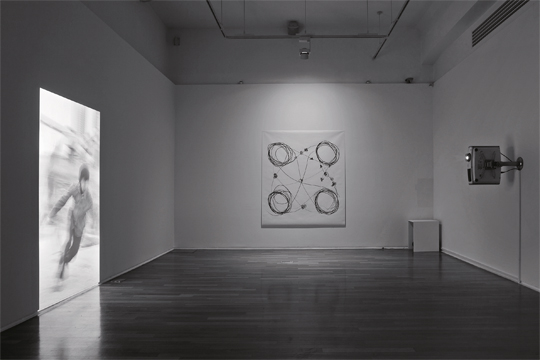BRILLIANT COLLABORATORS
| December 13, 2013 | Post In LEAP 23

Authorship is a subject matter that has returned repeatedly throughout the history of avant-garde art practices in the twenty-first century. Ever since Marcel Duchamp mocked the artistic genius behind the Mona Lisa in LHOOQ (1919), we have witnessed art movements that expanded possibilities of alternative art productions with an ideological purpose. Fluxus in particular incorporated the concept of “collaboration” to form group projects as a collective effort to rebuke the cultural norms of solo artistic productions and the status quo. It sought to knock down egocentricism, as well as the socio-economic system that supported that convention.
“Brilliant Collaborators” tries to resuscitate an old critique of authorship, primarily as an inquiry to rethink traditional paradigms in modern and contemporary art. Newly appointed curator of the Ilmin Museum of Art Hyunjin Kim decided to explore the notion of “collective creativity” by presenting cross-disciplinary, project-based artworks. The exhibition indeed conveys intricate crossovers between a broad range of practices in visual arts, experimental music, architecture and design, as well as theater and dance. Any corresponding argument, however, seems lacking in clarity and thoroughness.
In the first room, we encounter Jung Young Doo’s collaboration with Sora Kim in Abstract Walking—A Spiral Movement Gradually Distancing from a Single Point (2012), but are not told the extent of the process that gave rise to this video. Instead, viewers have to figure out for themselves that Sora Kim initiated a complex project called “Abstract Walking.” In keeping with her usual conceptual practices about overcoming social barriers through communication, Kim invited artists to produce multiple narrative interpretations, eventually taking shape as an audio-visual installation— here reenacted by Jung Yung Doo in video form. By collaborating with Kim, Jung seeks to convey the idea of liberating oneself through performance. Yet without enough explanation of the concept, it is easy take the notion of collaboration at face value.
Similarly, we cannot decipher why Jang Young Gyu decided to work with so many divergent artists, dancers, and music directors. His Jang Young Gyu Music Archive p resents a collection of his musical productions for film, dance, and theater during the past decade of his career as a music director. Featuring over 80 works, the archive is fascinating—but more a testament to Jang’s prolific interventions, and less about the process leading up to the collaboration. An Sungchul (2004) is a short and funny audio story produced by the “UhUhBoo” project, which Jang cofounded. Again, though sufficiently entertaining, it is hard to decipher the exact purpose behind the project.
Despite the exhibition’s emphasis on summarizing a consensus about collaboration or the ideological aim of this, a diverse range of shared social and political concerns can be detected. For instance, there are recurring interests in reconsidering Korean tradition and national identity. Jung Young Doo and Do Ho Suh revisit the legacy of Hamnyeongjeon, where the Japanese abdicated and confined Gojong, the last King of the Joseon Dynasty, until his death in 1919. Jung brings careful, nuanced performances to the very bedchamber where Gojong had passed away. Elsewhere, architect Choi Choon and artist Kim Beom return to the Korean countryside and reinterpret the landscape of the Sangha community by designing buildings for local schools and farms. We may remember their common hope for this small rural community.
By the end of the exhibition, the curator certainly makes a clear point on “collaboration.” But whether she successfully reevaluates the notion of authorship remains uncertain—nor do we see why this issue should be an urgent matter. That said, “Brilliant Collaborators” aims to present itself as one of the more thoughtful exhibitions on show right now in Seoul. There may be ambiguities, and something lukewarm about this particular case, but it is nevertheless a significant example of emerging curatorial visions wriggling their ways out from the domain of conventional exhibition format here in South Korea.


